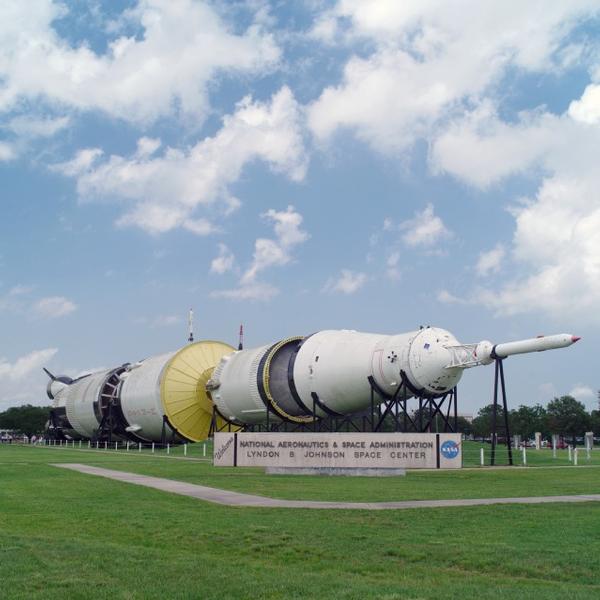|
| | Save The Saturn V!!! The Saturn V Rocket at the Johnson Space Center, is facing an uncertain future, and needs your fiscal help!  | | The Saturn V Rocket at the Johnson Space Center in Houston Texas... The only complete stack using flyable parts! |
The Saturn V on display at Johnson Space Center, intended for Apollo 18, never got off the ground. It has long outlived its sisters that did take men to the Moon between 1969 and 1972. That extended life, however, has brought some uninvited guests to the rocket such as mold and small animals.
Some external surfaces of the Saturn V have broken down and corrosion has affected internal and external structures. Excessive moisture and poor drainage throughout the rocket have led to mold and plants growth. Small animals have found shelter inside the irreplaceable landmark and are responsible for acidic debris and damage.
Now the Smithsonian Institution's National Air and Space Museum has begun preservation efforts on the 363-foot launch vehicle that should add many more years to the rocket's life.
The Saturn V, from the command module's escape tower to the nozzles of the five first-stage engines, has been on display outdoors at Johnson Space Center since 1977. It formally became part of the Smithsonian collection in 1978 but remained at Johnson Space Center.
A grant from the Save America's Treasures program of the National Park Service and the National Trust for Historic Preservation could provide $1.25 million for the project. More than half the required dollar-for-dollar matching funds have been raised from the private sector. Allan Needell, Apollo curator at the National Air and Space Museum, hopes more donations will allow the Smithsonian to make full use of the Save America’s Treasures grant.
The Smithsonian has contracted with Conservation Solutions Inc. (CSI) of Washington, D.C., for initial steps of preservation: thoroughly cleaning all rocket stages, removing fluids from tanks and lines, proposing and testing state-of-the art techniques for corrosion removal, surface preparation and repainting, and starting work to repair damaged components. The work began in March.
CSI also will provide a temporary temperature- and humidity-controlled building to protect the Saturn V during the preservation work and until a permanent indoor display site can be provided. The goal is to save the Saturn V and to restore it to its original appearance.
Smithsonian curators, conservators, advisors and NASA have been working to create a comprehensive plan to preserve and protect the Saturn V at Johnson Space Center for future generations. They have raised enough money to finish the plan's first phase. If the remaining matching funds can be raised, the job is scheduled for completion in December.
The Saturn V was first used to carry humans during the Apollo 8 mission, which orbited the moon in 1968. The rockets were used for all lunar landing missions and to carry Skylab into orbit in 1973.
Of the three surviving Saturn V launch vehicles, only the spacecraft at Johnson Space Center is made entirely of rocket stages intended for flight. Three planned Moon flights, Apollo 18, 19 and 20, were canceled. (Source : www.jsc.nasa.gov) We encourage everyone to give as they can to funding the complete restoration of the Saturn V in Houston, Texas. Send your donation to: National Air and Space Museum
Saturn V Fund
P.O. Box 23197
Washington, DC 20026 Or click here for more information (Off-site link to the National Air & Space Museum) The space history community can make a real difference but time is of the essence. Every day wasted is a day closer to losing this vehicle to its surroundings. Act now and save this Saturn V. 
|
